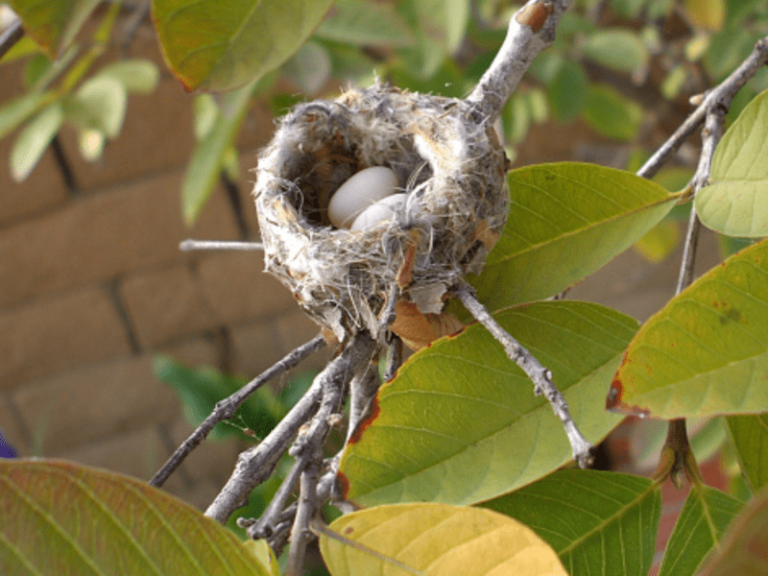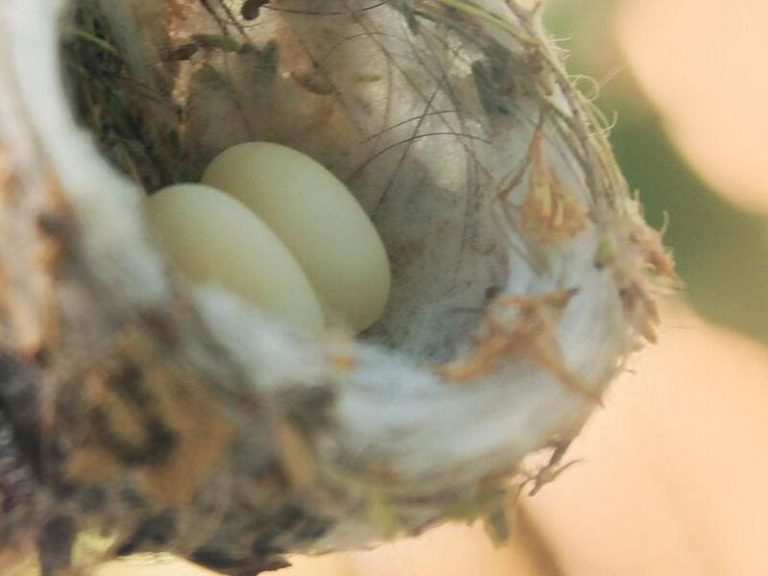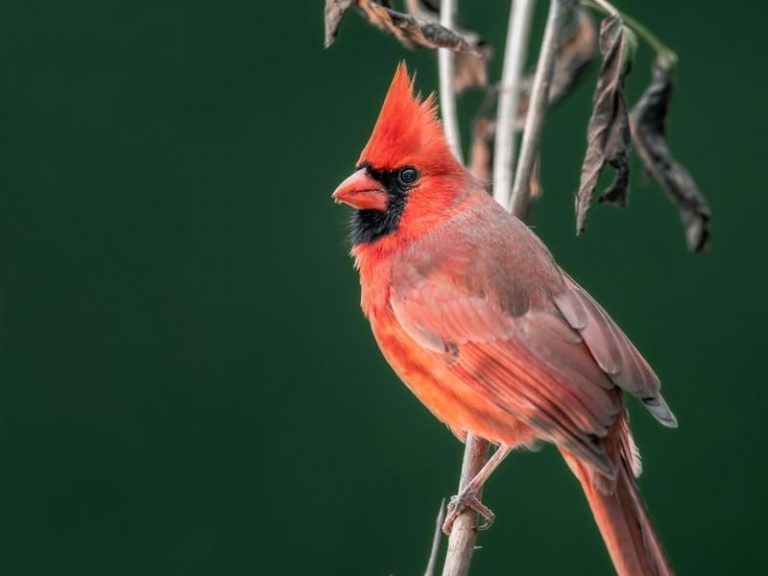Do Cardinals Mate For Life? (Everything You Need To Know)
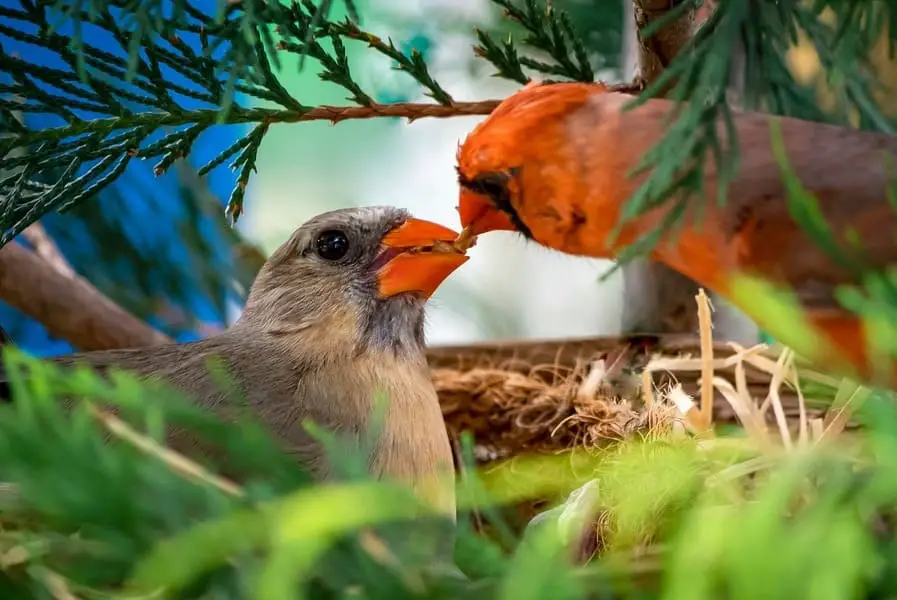
If you’re curious about whether cardinals couple up and mate for life, you’re in the right place. Cardinals, members of the cardinal family (Cardinalidae,) are beloved backyard birds across much of North America.
They brighten our days with their vibrant colors and bring a sense of calm to yards and gardens everywhere. But have you ever wondered whether do cardinals mate for life?
In this blog post, we’ll explore all there is to know about the relationship habits of these beautiful birds, from how they form pairs during the breeding season to instances where they switch mates or engage in polygyny.
How Cardinals Choose Mates
Male cardinals display a certain set of characteristics when deciding on their mate. They sing to attract the attention of their chosen female, assess the response they get, and try to coax her into courtship by hopping around her and fluttering their wings.
When establishing territory, mated pairs will fight off any intruders that come too close and often build simple nests near shrubs for bearing eggs.
Some male cardinals also bring gifts such as twigs or pieces of straw to attract potential mates and reinforce monogamy, though this practice is not common among all cardinals.
During mating season, some male cardinals become fiercely territorial towards their desired mate and may even go after other birds in order to protect their females from potential rivals.
Ultimately, following much courting effort from both sides, the pair stays together for at least one breeding season, showing us that there is more than physical attraction when it comes to choosing a mate for the majestic Cardinal bird.
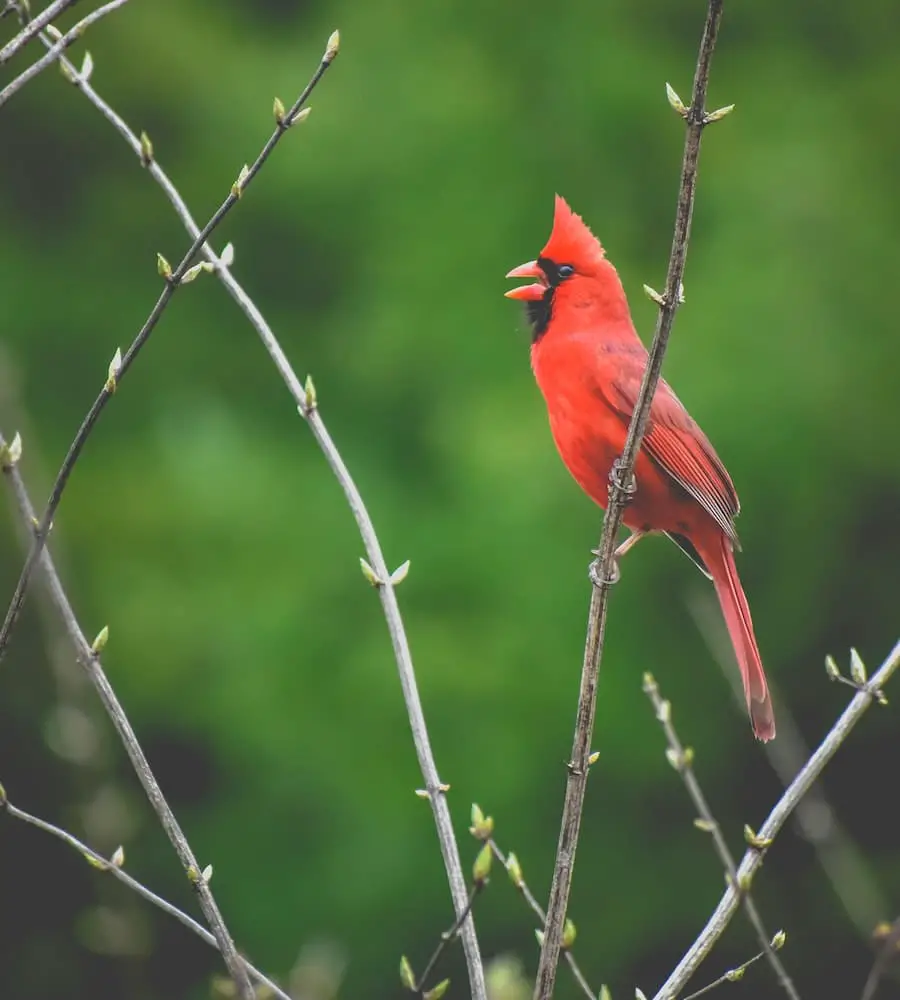
Do cardinals mate for life?
It is perhaps the most enchanting of all the bird questions out there: Do cardinals mate for life? The answer, surprisingly, is both yes and no.
While cardinals are certainly among the most devoted and protective mates in the bird world, they are known to take on new partners if their original one passes away.
It makes sense, given that cardinals can live up to 15 years or more. A long life could mean finding new connections as time passes by.
This capacity for renewal might be even more important in their northern range; in colder climates, fewer young fledglings survive, so reproductive opportunities need to be maximized for populations affected by harsher weather conditions.
Nevertheless, Cardinals remain loyal partners and will appear beside each other year after year, engaging in tender moments of song and courtship during mating season.
What Happens If A Cardinal Mate Dies?
When a cardinal mate dies, the surviving partner may go through a period of grief that could last up to several months.
During this time, the grief-stricken bird may become more isolated, singing less often and withdrawing from its normal activities.
If it is able to resume those activities, there’s still the possibility that it will seek out a new mate.
They may also exhibit behaviors that mimic courtship rituals as if they are trying to honor the memory of their beloved mates, such as nesting in couples and performing individual songs that represent commitment and devotion.
Nature typically has a way of ensuring no species falls into extinction and so by pairing off with another female or male, cardinals can continue their legacy.
Ultimately, no matter what grief the survivor endures when losing a mate, time will eventually comfort them, allowing for all kinds of wonderful new possibilities.
When They Don’t Stay Together
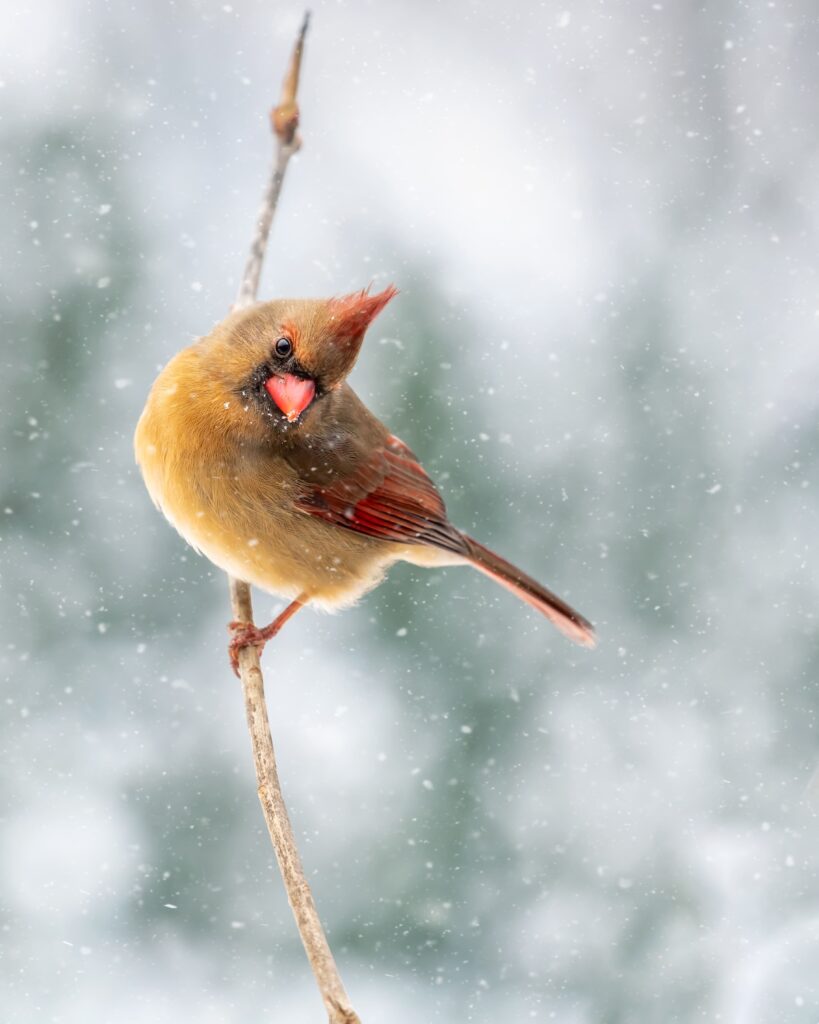
Cardinals are typically thought of as monogamous birds, but that isn’t always the case.
After the mating season has ended in early summer, female cardinal pairs will go their separate ways and choose different nesting spots for the upcoming season.
During wintertime, however, you may see flocks of cardinals gathering together in feeders for warmth and security.
In addition to seeking out food sources, these gatherings offer an opportunity for males and females to reunite and pick up their relationships where they left off earlier in the year.
Cardinals have an unusual mating behavior that often surprises people who think all bird pairs stay together forever.
Generally, when two cardinals are apart, they lack the companionship that comes with being together and no longer enjoy the same activities and events as a couple.
This can cause feelings of loneliness and even depression, leading to further disengagement from their lives prior to shared pursuits.
When cardinals are unable to resolve the issues that led to their separation, it can be difficult for them to continue growing on their own and create new experiences without each other.
FAQs
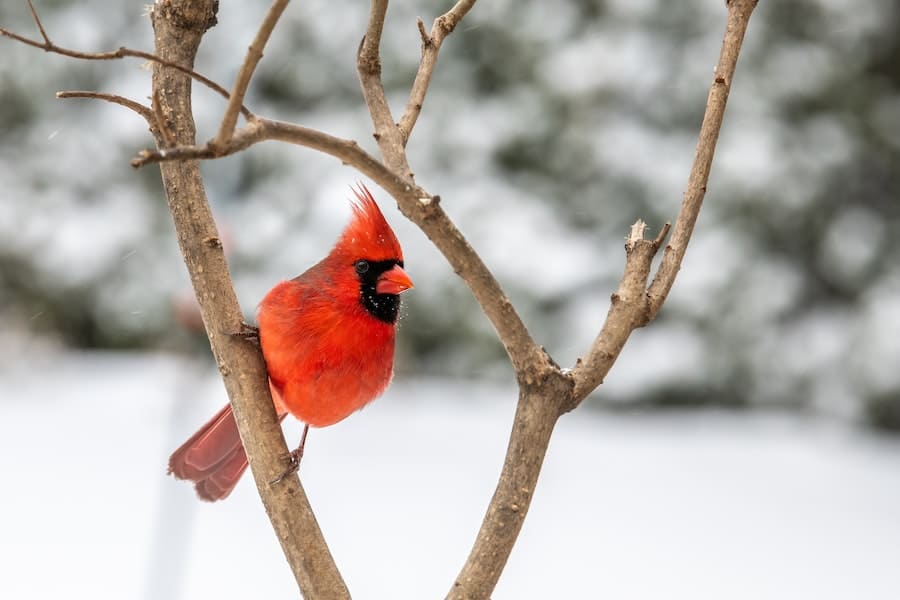
Recommended reading: Best Birdhouse For Cardinals
Generally, Cardinals are popularly known for their bright red feathers and deep vocalizations.
In addition to these endearing traits, cardinals possess many interesting habits that make them even more enjoyable creatures to observe.
For instance, they often build nests with a variety of unusual materials in them, such as strings and hair. Their diet consists mainly of seeds, grubs, and occasionally fruits.
They are also renowned as one of the few species of birds that can remember bird feeders long-term, making it easy for humans to create a connection with them wherever they live.
When entering competition territories such as trees and feeders, male Cardinals use their signature singsong to defend what little space remains.
One thing is certain, the presence of cardinals often signifies a lively presence in any environment.
Interestingly, cardinals also use rules of etiquette when it comes to competing for food at the feeder. The most dominant cardinal will arrive first and claim the food before allowing other birds to join them later.
This behavior is believed by scientists to help protect the weaker birds from being crushed by more aggressive birds during feeding time, demonstrating that cardinals can be quite thoughtful in their interactions with each other.
We have discussed the mating and characteristics of cardinals in detail now. Let us talk about some frequently asked questions about cardinals now.
What happens when a cardinal loses its mate?
When a cardinal loses its mate, it engages in a wide range of behaviors to cope with the loss.
It has been observed that cardinals will often become much less vocal and less active as they struggle to adjust to their new world without their companion.
They may even scour their territory more intensively, searching for evidence of another bird or another mate, although these actions are usually unsuccessful.
If the grieving period is long enough, the bird eventually let’s go and moves on with an increased level of enthusiasm while focusing on finding a new mate.
It’s hoped by then that the heartache of losing its previous partner has finally dissipated. The bird may spend several weeks trying to locate its lost partner, singing and flitting from tree limb to tree limb in search of them.
If no companion is found then the single bird may become attached to another pair of cardinals or even join a flock of buntings.
Thankfully some cardinals are able to reconnect with their original partners after a certain amount of time apart, and they can once again pick up their courtship rituals where they left off.
Do cardinals mate with other birds
Cardinals are one of the most striking birds, with bright red feathers, a black face, and cheek patches.
While they may look very different from other birds in the same habitat, they have been known to mate with other species in some cases.
The Cardinals will sometimes mate with Blue Jays. This happens often enough that cardinals of mixed species have even developed their own unique name, the Blue Red Cardinal Hybrid.
This hybrid has characteristics taken from both of its parents, including its more vibrant coloration compared to either an all-blue jay or a red cardinal.
It’s quite amazing how two entirely different species can come together and create something completely new.
Cardinals are known to be loyal partners and often mate with the same birds year after year. In some cases, cardinals have been observed sharing their territories with other birds as well.
While male cardinals are aggressive towards intruders, they usually concede to female cardinals of a different species, which may wish to use their land for mating purposes.
Offspring of these unions are typically fertile, although it appears that such crossbreeding is quite rare in general.
The range and diversity of available habitats appear to be larger influences on which species or subspecies interbreed than the desire of individuals to find mates outside their species.
Do cardinals come back to the same place every year?
For many birds, migration is a way of life. Every year they travel vast distances to reach their seasonal destinations and feed or breed in places that offer more optimal climate patterns.
Of all the birds, cardinals are especially well-known for embarking on these grand adventures.
Every winter, they fly south and then return to the same spot the following spring, making their homecomings a highly anticipated event!
Despite many theories, the exact reason why cardinals make the same annual trip is unknown, but one thing that’s certain is that they make sure never to miss it.
Cardinals are birds known for their bold red color and familiarity with Northern Hemisphere regions.
In recent years, people have noticed that cardinals tend to come back to the same place year after year, suggesting that they may be heading to traditional breeding grounds or where the best food can be found.
To those that appreciate seeing these beautiful birds in their backyard each year, this trend brings a sudden appreciation for the idea of home and stability.
By tracking these birds, researchers are hoping to gain insight into the behavior of cardinals as they travel far and wide in search of adequate resources and shelter in a rapidly changing world.
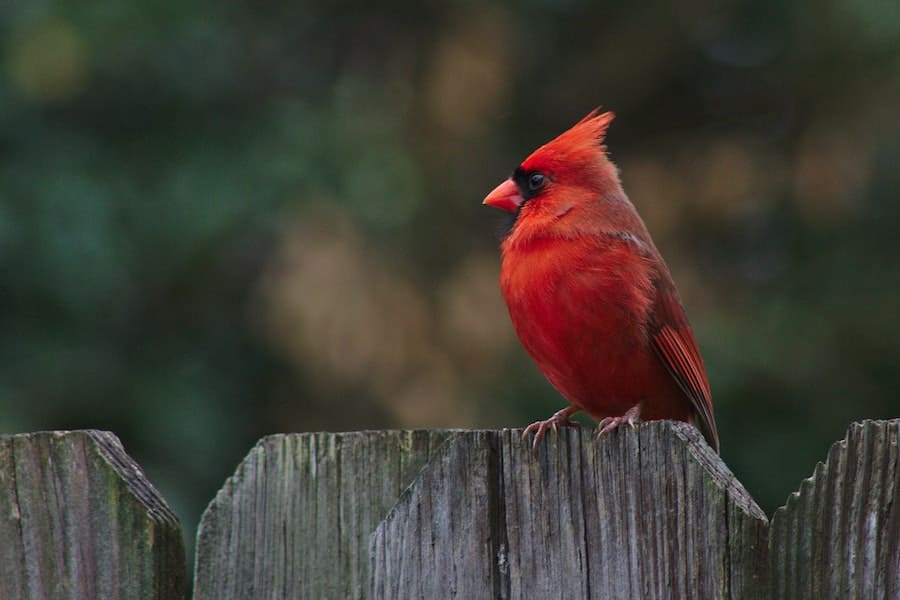
Do male and female cardinals stay together?
Male and female cardinals are strikingly beautiful birds that often stand out among the trees. They have bright red feathers and make loud, distinctive calls that people enjoy hearing throughout the day.
They also can display strong loyalty and devotion to their partners. Male and female cardinals are known for staying together even during harsh weather conditions or when food sources become scarce.
Both members of the pair take turns building nests, feeding each other, rearing young, taking watch for predators, and bringing fresh material back to the nest site for repairs.
Therefore, male and female cardinals do indeed stay together in a long-term partnership that allows them to thrive in even the most difficult of environments.
What is the lifespan of cardinals?
Cardinals are beautiful, brightly-colored birds that are found in the eastern and southern parts of the United States, but they can live up to 12 years in captivity.
In the wild, their lifespan is typically between 3 and 5 years. Factors such as weather, availability of food sources, and predators, all contribute to their short lifespan in the wild.
Natural selection often eliminates those cardinals that cannot feed themselves or lack the ability to protect themselves from predators.
The cardinals that manage to survive harsh conditions consequently have a longer life than an average cardinal lifespan.
Although they are not prone to predation, cardinals may suffer from endogenous factors like diseases or genetic disorders, which often affect their life expectancy.
Overall, factors like environment, diet, and behavior can also greatly influence how long a cardinal might live; even captive birds that are in optimal health can only reach roughly 14-15 years of age.
Final words about do cardinals mate for life
While there are many animals that have been known to mate for life, the cardinal is not one of them. Cardinals are polygamous and will mate with multiple partners during their lifetime.
While they generally form bonds with one particular mate, if that mate dies, the cardinal will find another partner.
So, while you may see a pair of cardinals sitting together in your backyard, don’t assume they’re mates for life.
You will also enjoy reading:

